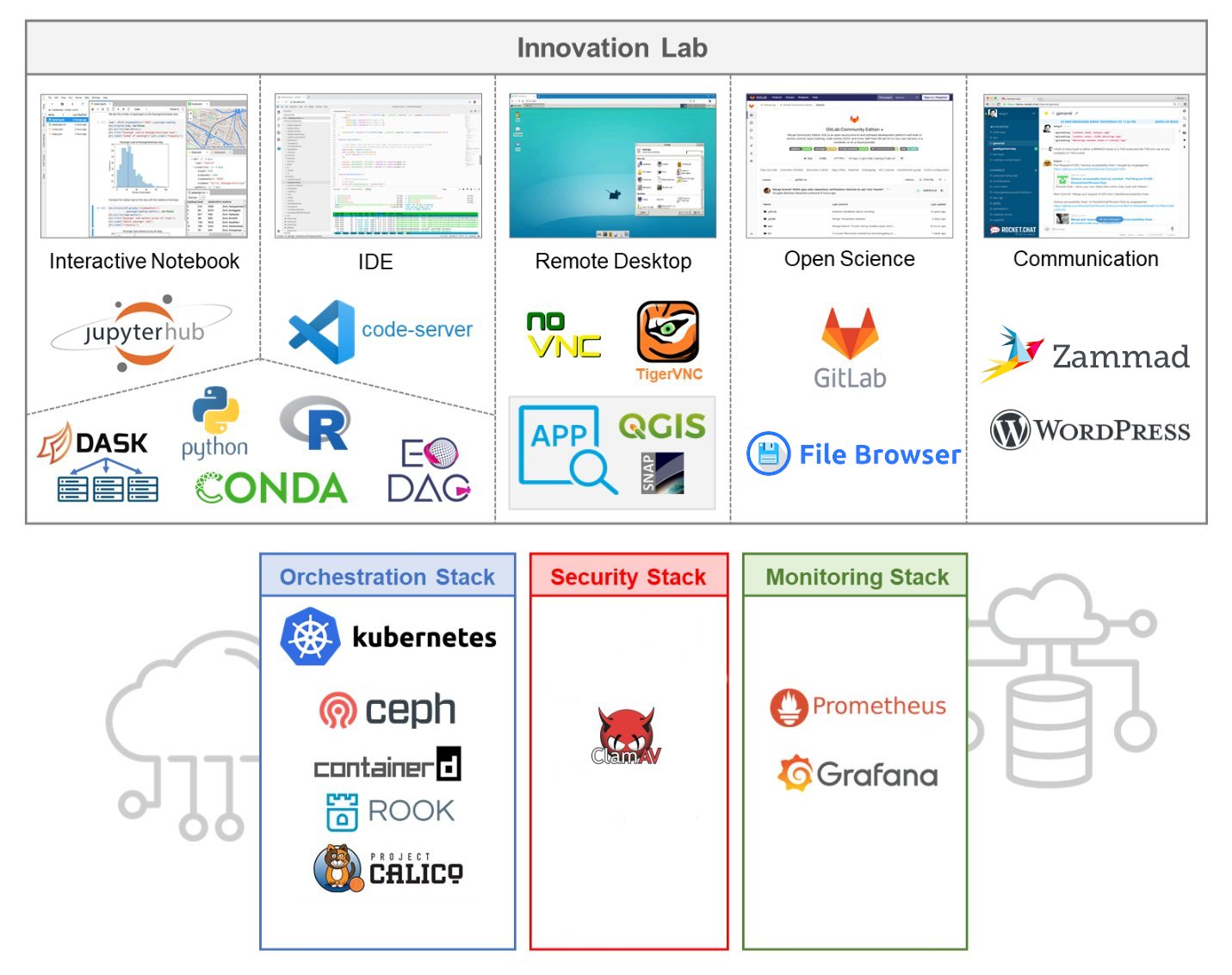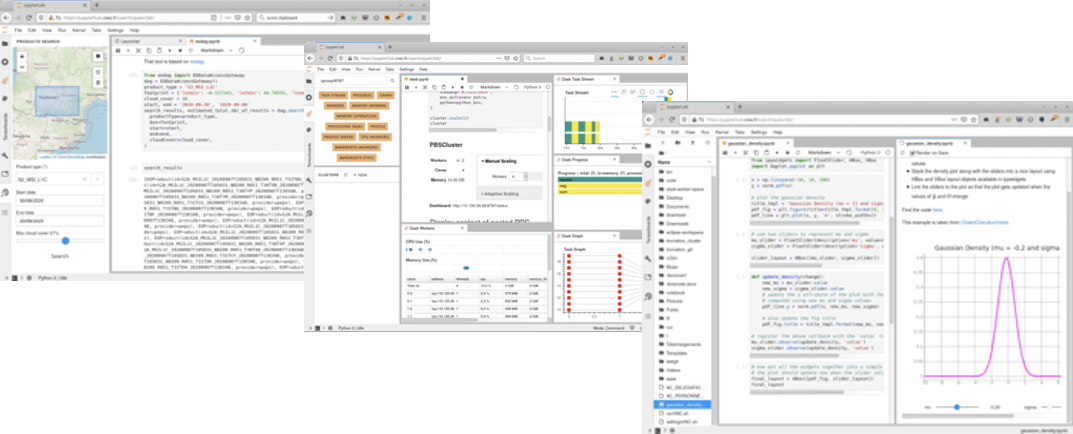In collaborative research, data, code sharing and versioning are crucial to allow reuse and reproduction of results in support of the academic debate, review and exchange. In this context, our Innovation Lab aims at supporting scientists accessing EO data (in-situ and EO), high-level products and open-source code (algorithms, models, tools) in order to develop innovative EO applications.
The Innovation Lab provides an interactive, user-friendly, cloud-based, versatile, and customizable EO data analysis environment. It also provides code analytics facilities for benchmarking, timing code and memory performance.
In order to have access to the Innovation Lab you need first to become a member of the EO AFRICA Community
For complex work with geodata, easy-to-use and versatile visualization facilities over data inputs, half-products and outputs are indispensable. As large data volumes are provided from DIAS technology, the Innovation Lab supports a level of data independence towards choice of DIAS platform, to allow switching between sources. As not all data may be public, some support for data sharing under integrity and confidentiality restrictions also present. The platform is built on components previously developed for large-scale EO research projects such as RUS, AI4GEO and Snap Earth, but it is based on an advanced integration of these into a single computing lab environment.

In a nutshell
- The virtual research environment (VRE) allows users to develop, test, run and optimize their research code making full use of the Copernicus DIAS infrastructure.
- Co-located data and computing services for fast data exploitation and analysis facilitate studies involving multi-spectral spatiotemporal big data and machine learning methods.
- The research environment designed for easy data and code sharing and adapted to low bandwidth access enables active collaboration of African – European research tandems.
- Access is provided to all research project teams and selected participants of the Space Academy.
Innovation Lab Architecture
- The main component is the METIS-RE Platform as a Service (PaaS) developed by CS Group based on JupyterHub with security, scalability and versality improvements.
- METIS-RE is complemented by two widely adopted solutions for code and data sharing: Gitlab CE and NextCloud.
- Interactive prototyping (Jupyterlab), integrated development (VS Code) and remote desktop (VNC) interfaces are provided for easy access

Key Features
- Development environment can be customized by the users (Conda).
- Unified access is provided to various EO data sources such as DIAS platforms, PEPS, and Copernicus Hub (EODAG).
- GPU-enabled (CUDA) and distributed computing (Dask) are supported.
- Scientific, geospatial, and EO desktop analysis software are available. (e.g. SNAP, QGIS)
- Integrated version control and direct access to code repositories are supported.

